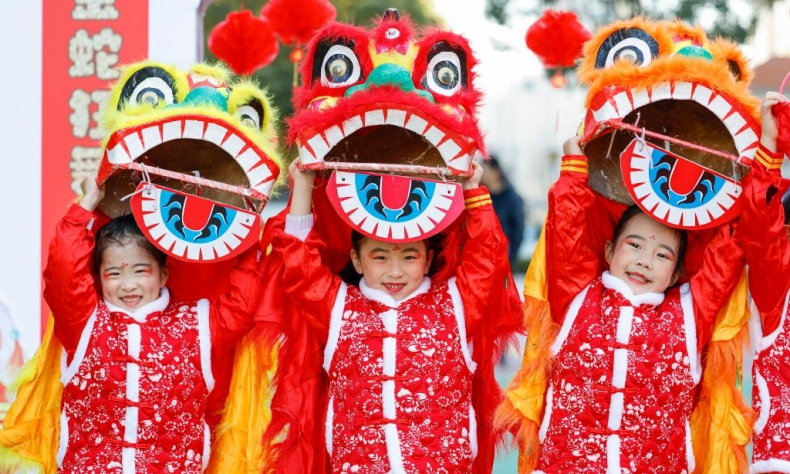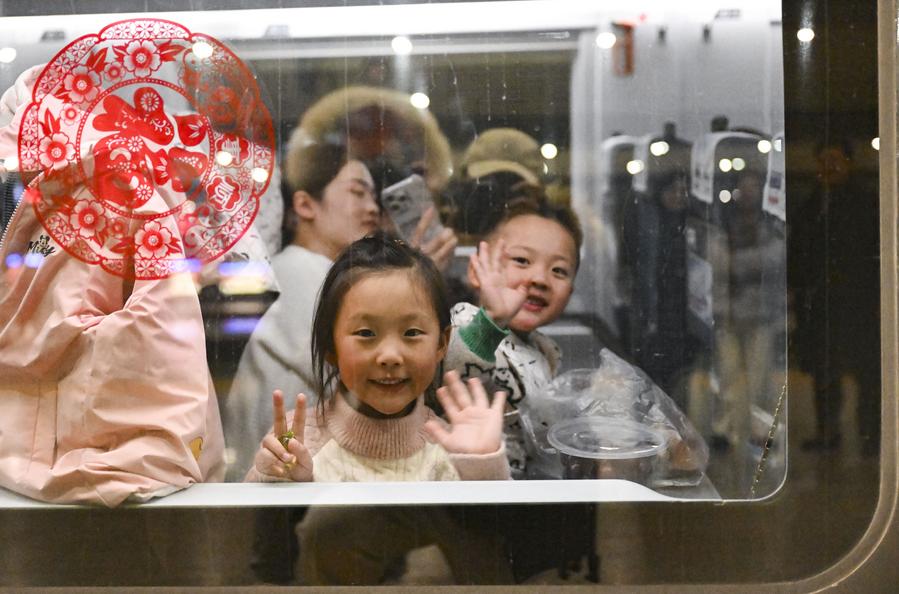Wood Snake Augurs a Year of Hope

No matter how far they are from home, the Chinese seek to be back home from the four corners of earth to reunite with their families during the Spring Festival.
In ancient China, the snake was worshipped as a totem. In Chinese mythology, Nüwa and Fuxi, the deities who created humans, were half human and half snake. Folk art depicts them as conjoined, with interlocked tails. While in Western culture the serpent is regarded as the tempter who caused the fall of man, in ancient Chinese philosophy, the snake is a symbol of fertility and vitality. As it has the disposition to shed skin, the snake is also emblematic of regeneration and a new beginning.
The year 2025 is the Year of the Wood Snake according to the Chinese lunar calendar and zodiac. The wood snake is an emblem of fortune, wealth, and stability, instilling hope. Moreover, this lunar Chinese year, starting on January 29, has 384 days, which makes it even more special, a time for breakthroughs and new achievements.
To celebrate the Year of the Wood Snake, China is awash with snakes, that is, as mascots decorating public spaces and homes, and sold in high-end urban shopping malls and rural outdoor markets. They are part of the street decorations and the image of the snake prevails in merchandise such as stuffed toys, cups, T-shirts, cosmetics and gold jewelry, and in cultural activities.
The snake has slithered into the Shanghai Museum, which is celebrating the Chinese New Year with an exhibition, “Spring: A Celebration of the Year of the Snake,” featuring 13 objects from its own collection as well as artifacts borrowed from the Lijiashan Bronze Museum in Yunnan Province, the first museum in China dedicated to bronze art, and the Hubei Provincial Museum.
“We want visitors to learn how the legends of the snake are passed down and have evolved over millennia in Chinese civilization, and to understand how the shared culture connects people of different ethnic groups across the country,” Chu Xiaobo, director of the Shanghai Museum, said.
The Spring Festival celebrations have more fizz this year with the tradition added to UNESCO’s Representative List of the Intangible Cultural Heritage of Humanity. It also sparks chunyun, the Spring Festival travel rush, a word that first appeared in Chinese media reports in 1954 and became a hot topic after China’s reform and opening-up started in 1978.
In 1979, a record 100 million trips were made during the festival. Since then, the number has continued to soar, thanks to China’s dramatic social changes and incredibly rapid economic development, which have prompted incredible population mobility. Now Spring Festival is also known as the time when the largest population migration in the world occurs annually. In 2018, the inter-regional trips in China during this period surged to three billion.

Data from Ctrip, a popular Chinese online travel agency, shows that inbound travel bookings for this period jumped 203 percent year on year in 2025. One reason for this is the expansion of the visa-free policy, which has made experiencing the Chinese New Year an enticing and feasible adventure for many international tourists.
The family is a core concept of Chinese culture and chunyun testifies to this strong family bond. No matter how far they are from home, the Chinese seek to be back home from the four corners of earth to reunite with their families during this time. This year, a record nine billion passenger trips are anticipated.
Over the past decades, the annual chunyun has also witnessed China’s incredible transformations. In the 1970s and the 80s, the slow green-carriage trains were the prime means of transport and China’s railway mileage was only around 50,000 km. Today, it has extended to 160,000 km and the speed of the trains has picked up from 60 km/hour to 350 km/hour. Now, it takes only four hours to reach Shanghai from Beijing, about 1,300 km away, by bullet train.
New technology has made purchasing tickets much easier. Twenty years ago, to get a chunyun train ticket, people would have to wait in front of a ticket booth for hours or even a whole night, with the queue running into several kilometers. But now, with ticket apps, they can buy tickets anytime anywhere.
In the 1980s, or even 90s, travelers struggled with packages in various shapes, containing presents and food to take back home. Today, thanks to the highly developed logistics system, they don’t have to carry the parcels themselves any more. All they need to do is to order the items online and couriers operating countrywide will send the commodities to the destinations even before the travelers arrive.
Last year, China’s express deliveries totaled 174.5 billion packages, the highest in the world for 11 consecutive years, with the business revenue up to RMB 1.4 trillion.
For international travelers, the Spring Festival is not just an occasion to experience the festivities but also an excellent opportunity to observe an ancient yet developing nation, its values and culture, and experience first-hand the sea change it has undergone.
A very happy Spring Festival to all our readers.
 Facebook
Facebook
 Twitter
Twitter
 Linkedin
Linkedin
 Google +
Google +










